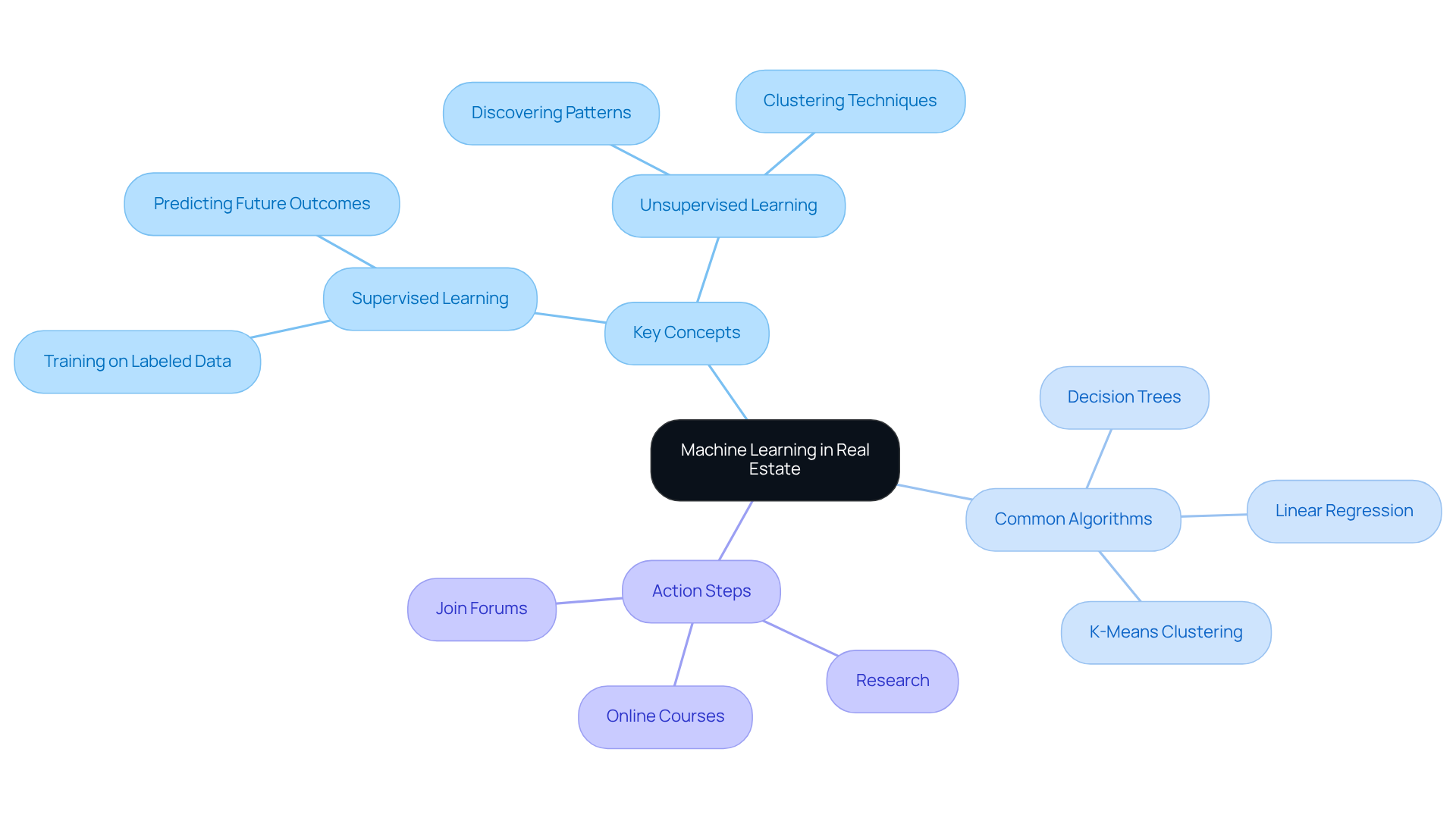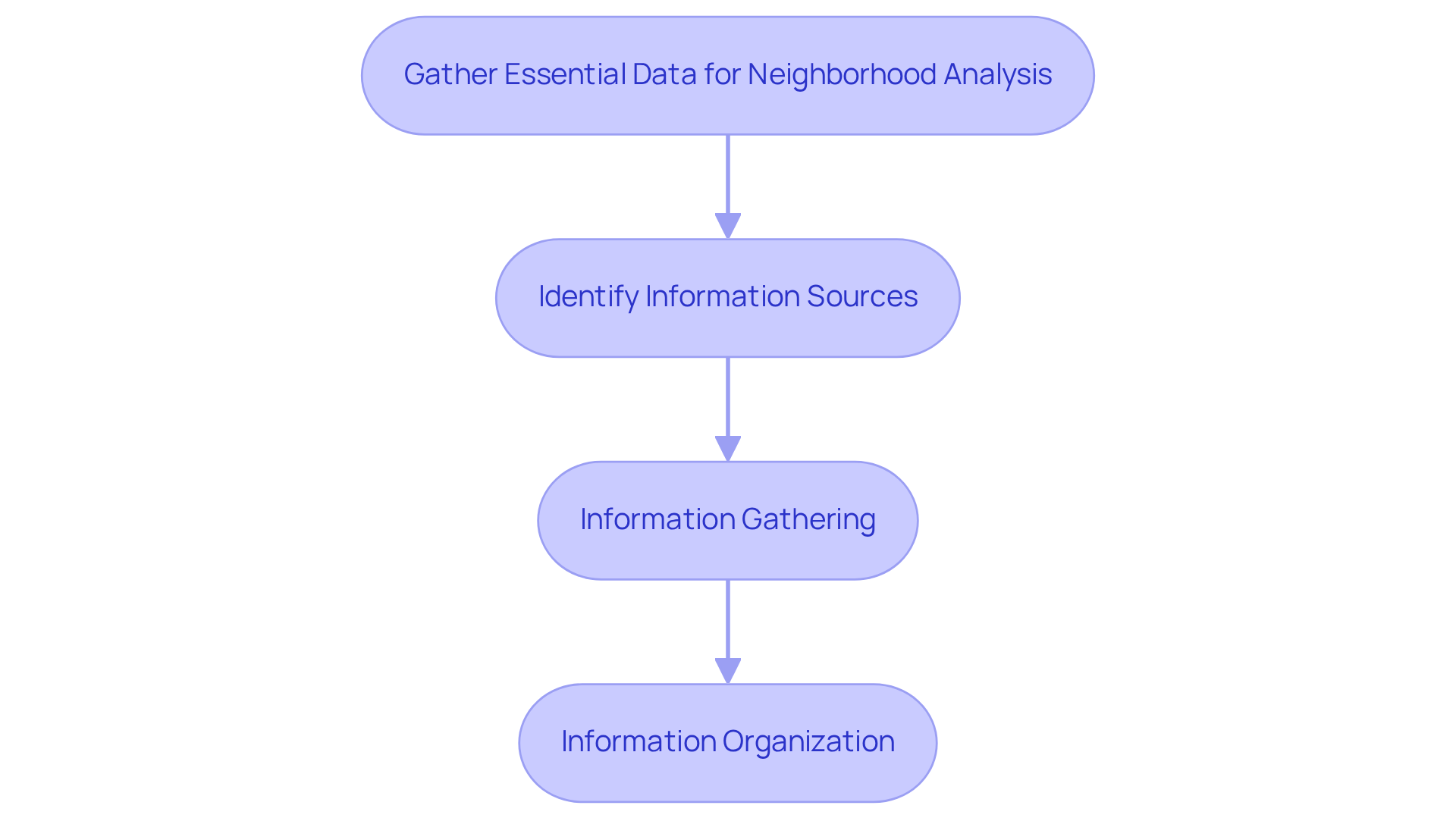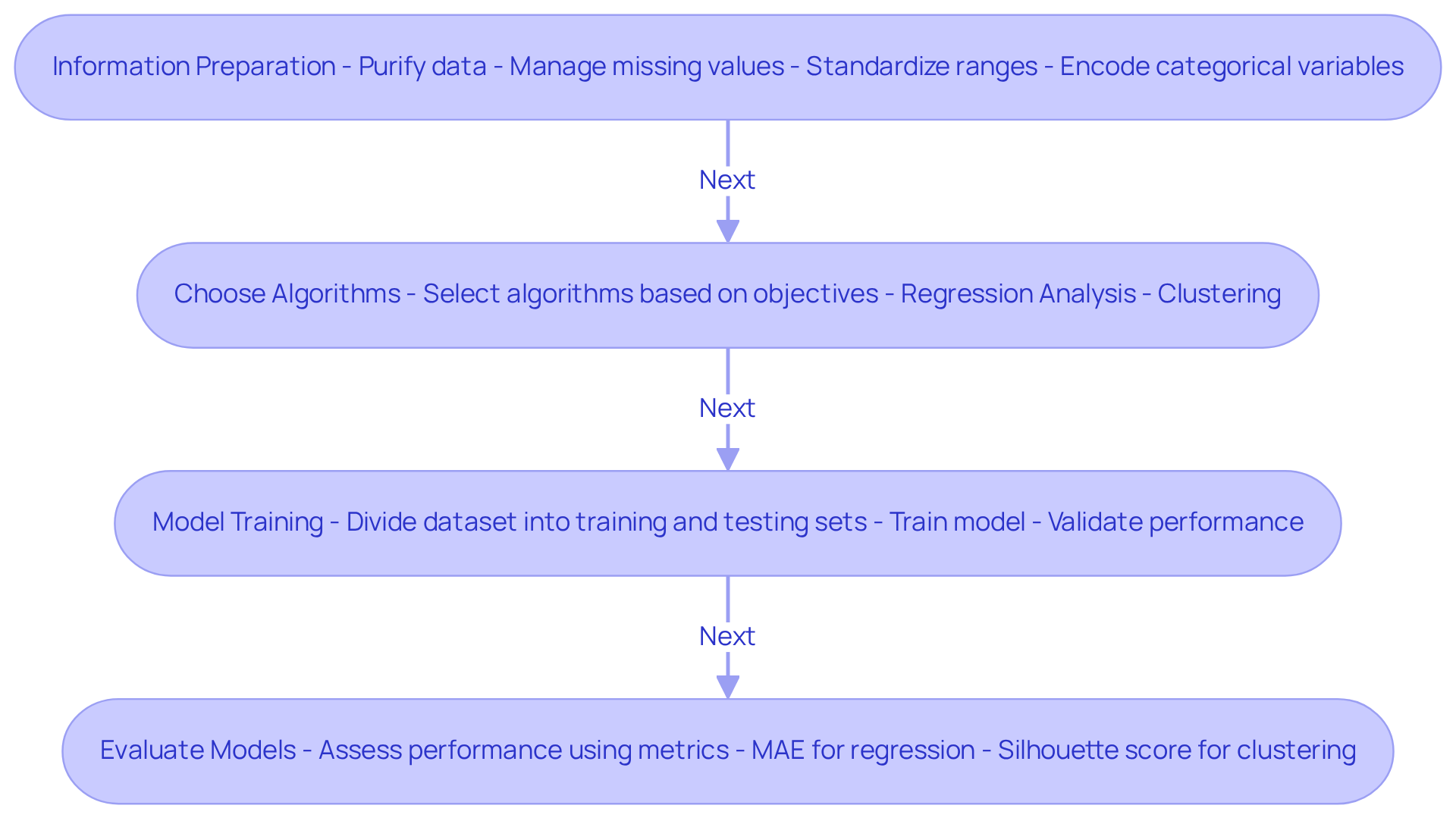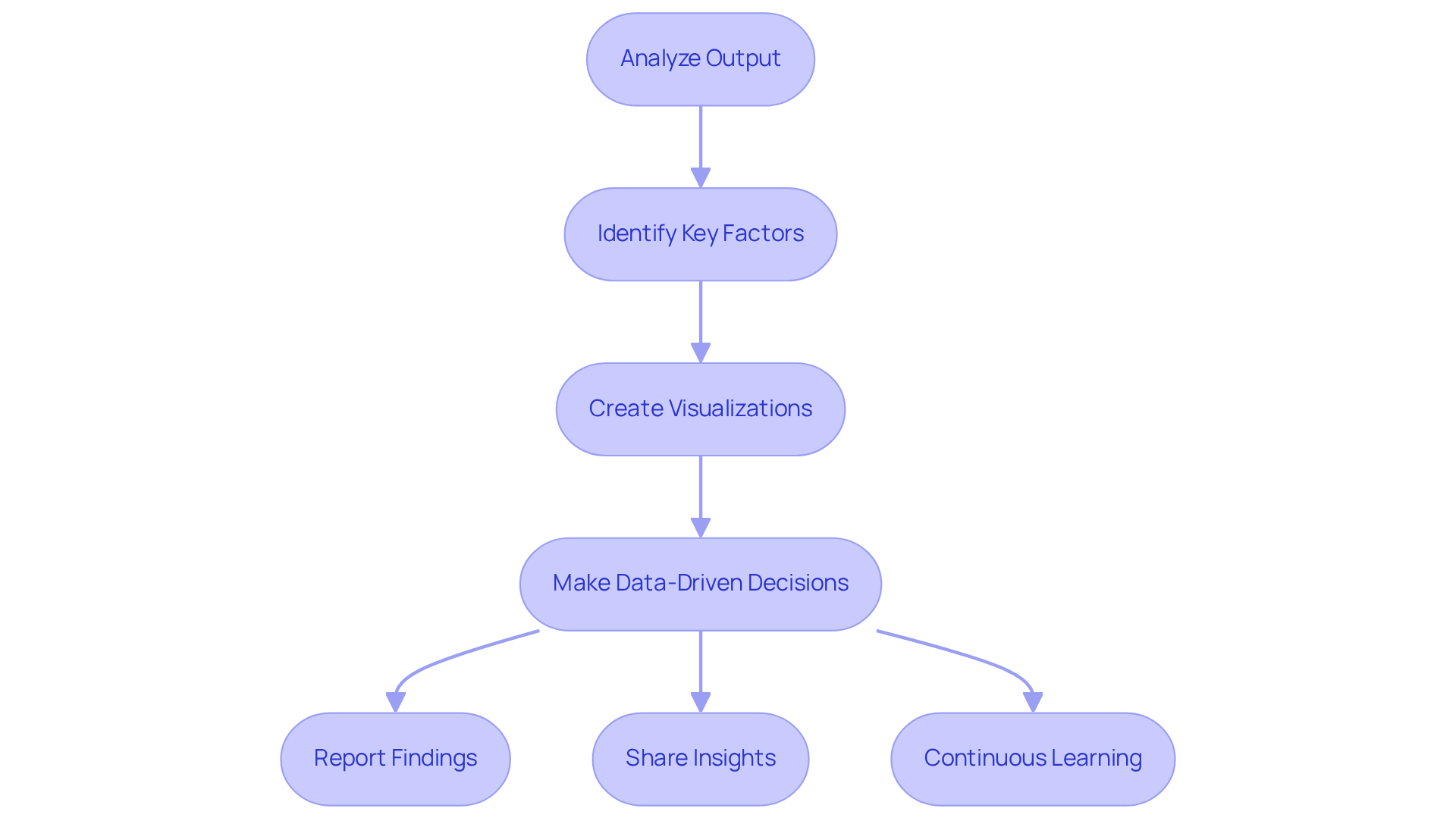Overview
This article delves into the effective utilization of machine learning to identify promising neighborhoods within the real estate sector. Understanding the fundamentals of machine learning is crucial; it lays the groundwork for gathering relevant data, applying suitable algorithms, and interpreting results. These steps are essential for enhancing decision-making and operational efficiency in real estate investments.
Furthermore, the importance of accurate title research cannot be overstated. Challenges often arise in the realm of data collection and analysis, which can hinder investment decisions. However, by leveraging machine learning techniques, investors can overcome these hurdles, gaining insights that lead to more informed choices.
Consequently, the application of machine learning not only streamlines the investment process but also increases the potential for higher returns. By employing these methodologies, real estate professionals can position themselves advantageously in a competitive market, ultimately driving success in their investment strategies.
Introduction
In the dynamic landscape of real estate, the ability to identify emerging hot neighborhoods can set investors apart from the competition. Leveraging machine learning offers a powerful toolkit for analyzing complex data sets, enabling real estate professionals to uncover hidden patterns that traditional methods might miss. However, as the reliance on technology grows, how can one effectively navigate the intricacies of machine learning to make informed investment decisions? This guide delves into the essential steps and strategies for mastering machine learning in real estate, providing readers with the insights needed to capitalize on lucrative opportunities in their local markets.
Understand Machine Learning Basics in Real Estate
To effectively harness machine intelligence in real estate, it is crucial to comprehend foundational concepts such as supervised and unsupervised methods, algorithms, and data collections. Supervised methods involve training models on labeled data to predict future outcomes, while unsupervised techniques focus on uncovering patterns in unlabeled data. Key algorithms include linear regression, which is instrumental in forecasting real estate values, and clustering algorithms like k-means, which categorize similar areas based on various characteristics.
Grasping these principles is vital for employing machine learning for identifying hot neighborhoods in neighborhood analysis. Case studies have shown that machine intelligence algorithms, such as Extra Trees and Random Forest, can significantly enhance property price predictions, surpassing traditional methods with R squared values reaching up to 0.96. As industry leaders emphasize, the integration of machine learning for identifying hot neighborhoods is not merely a trend but a necessity for improving decision-making and operational efficiency in real estate. Lennon H. T. Choy observes, "Machine intelligence is anticipated to play a larger part in shaping our future," underscoring its increasing significance in the industry.
Key Concepts:
- Supervised Learning: Training a model on known outcomes to predict future results.
- Unsupervised Learning: Discovering hidden patterns in data without predefined labels.
- Common Algorithms: Linear regression, decision trees, and k-means clustering.
Action Steps:
- Research: Explore introductory materials on machine intelligence, focusing on its applications in real estate.
- Online Courses: Enroll in courses that address machine training basics and their significance to the real estate sector.
- Join Forums: Participate in online communities to discuss machine learning concepts with peers and experts.

Gather Essential Data for Neighborhood Analysis
To examine neighborhoods effectively, it is essential to use machine learning for identifying hot neighborhoods by collecting a range of information types, including demographic details, real estate values, crime rates, and local amenities. The sources for this data can include:
- Public Records: Access property tax records and ownership data from local government websites, which provide foundational insights into property ownership and valuation.
- Real Estate Platforms: Utilize platforms like Zillow or Redfin for current listings and historical sales information, offering a clear picture of market dynamics and trends. For instance, in September 2025, there were 2,085,044 homes for sale in the United States, reflecting a 9.6% increase year over year.
- Census Information: Utilize demographic information from the U.S. Census Bureau to comprehend population trends and economic factors that affect real estate values. This information is crucial as it highlights the importance of demographic trends in property valuation.
- Local News and Reports: Stay updated with local news articles and reports that provide insights into neighborhood developments, changes in infrastructure, and community initiatives.
Action Steps:
- Identify Information Sources: Create a list of trustworthy information sources pertinent to your analysis.
- Information Gathering: Utilize web scraping tools or APIs to automate information collection from online platforms, ensuring efficiency and accuracy.
- Information Organization: Arrange the gathered information in a structured format, such as spreadsheets or databases, for easy access during analysis.
As Will Rogers wisely noted, "Don't wait to buy real estate. Buy real estate and wait," emphasizing the long-term value of informed investment decisions.

Apply Machine Learning Algorithms to Analyze Neighborhoods
Once your information is gathered, the next essential step is to apply machine learning for identifying hot neighborhoods. Here’s a structured approach to guide you:
-
Information Preparation: Start by purifying your information. This includes managing missing values, standardizing ranges to ensure consistency, and encoding categorical variables to make them appropriate for analysis. As Peter Sondergaard notes, "data is useless until it’s mined and handled in the right way," highlighting the importance of effective data handling.
-
Choose Algorithms: Select algorithms that align with your analysis objectives. For instance:
- Regression Analysis: Employ linear regression to predict property values based on various neighborhood features. The accuracy of your model can be assessed using metrics like Mean Absolute Error (MAE), which is crucial for understanding prediction accuracy.
- Clustering: Use k-means clustering as a method of machine learning for identifying hot neighborhoods with similar characteristics, facilitating targeted insights. The silhouette score can be utilized for evaluating clustering effectiveness.
-
Model Training: Divide your dataset into training and testing sets. Train your model using the training set and validate its performance with the testing set to ensure reliability. This step is crucial, particularly given that the need for skilled information specialists is expanding at a rate of 36% due to the rising production of information.
-
Evaluate Models: Assess model performance using relevant metrics. For regression models, MAE is a key metric, while silhouette scores can be utilized for evaluating clustering effectiveness. Incorporating a confusion matrix can also provide insights into the model's performance by comparing true positives, true negatives, false positives, and false negatives.
Action Steps:
- Utilize Libraries: Take advantage of libraries such as Scikit-learn or TensorFlow to implement your machine learning algorithms efficiently.
- Experiment: Test various algorithms and parameter settings to identify the optimal configuration for your specific dataset. As Dan Heath highlights, grasping how to contextualize information is vital for deriving significant insights.
- Document Findings: Maintain comprehensive records of your model configurations and results to inform future analyses and improvements. This practice is essential for ongoing education and adjustment in the rapidly changing realm of analytics.

Interpret Machine Learning Results for Real Estate Insights
Interpreting the results of machine learning for identifying hot neighborhoods is crucial for understanding community dynamics in real estate. To derive actionable insights, follow this structured approach:
- Analyze Output: Begin by reviewing the model outputs, concentrating on key metrics and visualizations that reveal trends and patterns in the information.
- Identify Key Factors: Pinpoint which features, such as proximity to schools and crime rates, significantly influence property values and community desirability. For instance, studies show that homes located within a mile of high-performing schools often command higher prices, reflecting the demand for quality education.
- Create Visualizations: Utilize tools like Matplotlib or Tableau to craft visual representations of your findings. Effective visualizations can simplify complex data, making it easier to convey insights to stakeholders.
- Make Data-Driven Decisions: Leverage the insights gained to inform your investment strategies. This could involve using machine learning for identifying hot neighborhoods that show potential for appreciation or assessing risks associated with certain areas.
Action Steps:
- Report Findings: Compile a comprehensive report summarizing your analysis, complete with visualizations and key takeaways that highlight the implications of your findings.
- Share Insights: Present your findings to stakeholders or clients, providing them with the necessary information to make informed real estate decisions.
- Continuous Learning: Keep abreast of new machine learning techniques and evolving market trends to enhance your analysis process and maintain a competitive edge.

Conclusion
Leveraging machine learning to identify hot neighborhoods in real estate signifies a transformative approach to property investment and market analysis. By comprehensively understanding the fundamentals of machine learning, gathering essential data, applying appropriate algorithms, and interpreting results, real estate professionals position themselves to make informed decisions that enhance their competitive edge in the market.
Key insights discussed underscore the importance of both supervised and unsupervised learning methods, the necessity of collecting comprehensive data from reliable sources, and the application of algorithms such as:
- Linear regression
- K-means clustering
These elements collaboratively create a robust framework for analyzing neighborhood dynamics, thus enabling investors to pinpoint areas with high potential for appreciation and growth.
Ultimately, the integration of machine learning into real estate analysis transcends mere technological advancement; it emerges as a strategic imperative for those aiming to thrive in an increasingly data-driven market. By embracing these techniques and continuously updating their knowledge in this field, stakeholders are empowered to make data-driven decisions, ensuring success in their real estate endeavors.
Frequently Asked Questions
What are the foundational concepts of machine learning in real estate?
The foundational concepts include supervised and unsupervised methods, algorithms, and data collections. Supervised methods involve training models on labeled data to predict future outcomes, while unsupervised techniques focus on uncovering patterns in unlabeled data.
What is supervised learning in the context of real estate?
Supervised learning involves training a model on known outcomes to predict future results, which is particularly useful for forecasting real estate values.
What is unsupervised learning in real estate?
Unsupervised learning is the process of discovering hidden patterns in data without predefined labels, helping to identify trends and characteristics in real estate data.
What are some common algorithms used in machine learning for real estate?
Common algorithms include linear regression, decision trees, and k-means clustering, each serving different purposes in data analysis and prediction.
How can machine learning enhance property price predictions?
Machine intelligence algorithms, such as Extra Trees and Random Forest, can significantly improve property price predictions, with R squared values reaching up to 0.96, indicating a strong correlation with actual values.
Why is machine learning important for identifying hot neighborhoods?
The integration of machine learning for identifying hot neighborhoods is essential for improving decision-making and operational efficiency in real estate, as it allows for more accurate analysis of market trends.
What are some action steps to learn about machine learning in real estate?
Action steps include researching introductory materials on machine intelligence, enrolling in online courses that address machine training basics and their significance to real estate, and joining forums to discuss concepts with peers and experts.




